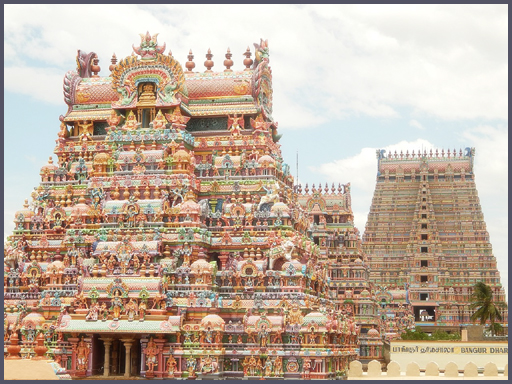Exploring the Charm and Rich History of Aurangabad, India
Exploring the Charm and Rich History of Aurangabad, India
Located in the western Indian state of Maharashtra, Aurangabad is a city known for its rich history and cultural heritage. It is home to several UNESCO World Heritage Sites and is a popular destination for tourists from all over the world. In this blog post, we will explore the charm and history of Aurangabad.
 |
| Aurangabad, India |
Srinagar, India: A Paradise on Earth
Discovering the Spiritual Heart of India: A Journey to Varanasi
Vasai-Virar: A City of Natural Beauty and Rich Culture
Dombivli: A Must-Visit Destination in India
Historical Significance
Aurangabad was founded in 1610 by Malik Amber, a prime minister of the Nizam Shahi dynasty. The city was named after Mughal Emperor Aurangzeb, who made it his capital during his reign from 1653 to 1707. Aurangabad is known for its rich history and culture, which is reflected in its numerous historical monuments and buildings.
Aurangabad tourist places
Aurangabad, India is a popular tourist destination known for its rich history and culture. The city is home to several UNESCO World Heritage Sites, including the Ajanta and Ellora Caves, which feature ancient rock-cut temples and artwork. The Bibi Ka Maqbara, a stunning mausoleum often referred to as the "Taj of the Deccan," is another popular attraction. Other notable tourist places in Aurangabad include the Daulatabad Fort, with its underground tunnels and water channels, and the Aurangabad Caves, a group of 12 rock-cut Buddhist shrines. The city's vibrant arts and crafts scene and delicious cuisine also draw visitors from around the world.
UNESCO World Heritage Sites
Aurangabad is home to two UNESCO World Heritage Sites – the Ajanta Caves and the Ellora Caves. The Ajanta Caves, which date back to the 2nd century BCE, are a series of 30 rock-cut Buddhist cave monuments that are famous for their exquisite wall paintings and sculptures. The Ellora Caves, on the other hand, are a series of 34 rock-cut temples that were built between the 6th and 10th centuries CE. These temples are a testament to the religious harmony that existed in ancient India, as they feature Hindu, Buddhist, and Jain monuments.
Other Historical Monuments
Apart from the Ajanta and Ellora Caves, Aurangabad is also home to several other historical monuments and buildings. The Bibi Ka Maqbara is a mausoleum built by Mughal Emperor Aurangzeb in memory of his wife, Dilras Banu Begum. It is often referred to as the "Taj of the Deccan" due to its resemblance to the famous Taj Mahal in Agra. The Daulatabad Fort, which was built in the 12th century, is another popular tourist attraction. The fort is known for its intricate architecture and engineering, which includes a series of underground tunnels and water channels.
Culture and Food
Aurangabad is also known for its rich culture and delicious food. The city has a vibrant arts and crafts scene, with several local artisans producing intricate works of art such as Paithani sarees, Himroo shawls, and Bidriware. The city is also famous for its spicy cuisine, which includes dishes such as the spicy Hyderabadi biryani, the fiery Kolhapuri mutton, and the mouth-watering shrikhand.
Getting There
Aurangabad is well-connected to other parts of India via air, rail, and road. The city has its own airport, the Aurangabad Airport, which is served by several domestic airlines. The city also has a major railway station, the Aurangabad Railway Station, which is connected to several major cities in India. For those traveling by road, Aurangabad is connected to other parts of Maharashtra and India via several national highways.
Places to visit in aurangabad
Aurangabad, India is a city known for its rich history and culture. Some popular places to visit include the UNESCO World Heritage Sites of the Ajanta and Ellora Caves, as well as the Bibi Ka Maqbara, a mausoleum that is often referred to as the "Taj of the Deccan." Other notable attractions include the Daulatabad Fort, a 12th-century fort with a series of underground tunnels and water channels, and the Aurangabad Caves, a group of 12 rock-cut Buddhist shrines. The city is also known for its vibrant arts and crafts scene and delicious cuisine.
Aurangabad caves
The Aurangabad Caves are a group of 12 rock-cut Buddhist shrines located on a hillside in Aurangabad, India. They were built during the 6th and 7th centuries CE and are notable for their intricate carvings and sculptures. The caves feature a mix of Hinayana and Mahayana Buddhist art, and many of the sculptures and reliefs depict scenes from the life of the Buddha. The Aurangabad Caves are a popular tourist attraction and are often visited in conjunction with the nearby UNESCO World Heritage Sites of Ajanta and Ellora.
Natural Disasters in Aurangabad, India
Aurangabad, India is susceptible to a few natural disasters, including floods and droughts. The city is located in an area that is prone to floods, particularly during the monsoon season. Droughts are also a concern in the region, as the city's water supply is largely dependent on rainfall. In addition, Aurangabad is located in a seismically active zone, which makes it susceptible to earthquakes. The government and local authorities have taken measures to mitigate the impact of these natural disasters, but residents and tourists are advised to stay informed and take precautions during such events.
Conclusion
Aurangabad is a city that is steeped in history and culture. Its UNESCO World Heritage Sites, historical monuments, vibrant arts and crafts scene, and delicious food make it a popular destination for tourists from all over the world. If you are planning a trip to India, be sure to include Aurangabad in your itinerary – you won't regret it!










Comments
Post a Comment